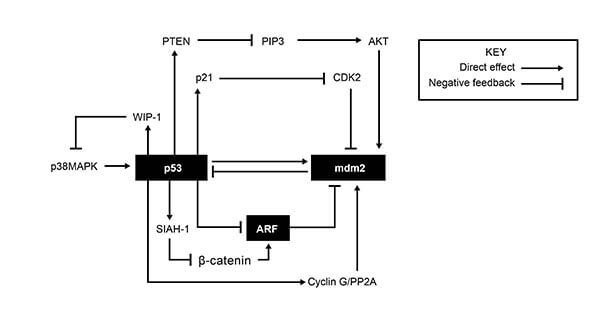
These free MCAT sample questions by Gold Standard aim to give you a taste of the degree of reasoning required for the exam, though some basic knowledge is expected. However, it is not the purpose of these free MCAT practice questions to serve as exposure to the timing or formatting of the exam. The latter is best reserved for full-length MCAT practice tests. Several of the sample questions below are included in our free MCAT practice test with 230 practice questions, answers with helpful explanations, and estimated scaled scores covering all 4 sections of the exam. Good luck!
Try out these free MCAT sample questions on Biology/Biochemistry. After you click on the Submit Answer button, you will see the explanation and the percentage of students who answered each option. You can find questions for other subjects on this page. Simply click on the icon of the particular subject.
Apoptosis is the process of programmed cell death that can occur in multicellular organisms. The proteins involved in apoptosis are associated with pathways for cell cycle arrest and DNA repair. These processes are mostly regulated through the interplay of various proteins involved in feedback loops including some of the ones shown in Figure 1.

Figure 1: Feedback loops forming a regulatory network affecting apoptosis, cell cycle arrest and DNA repair. (Bioformatics Institute) According to Figure 1, CDK2 activity would most reasonably increase due to all of the following EXCEPT:
Correct Answer: D
Explanation Notice the key in the figure which will allow us to follow each arrow that stimulates the next protein and each symbol for negative feedback which means there will be some downregulation (amount/concentration goes down). [Notice a key step in the diagram: p21 inhibits CDK2]
Degradation of p21 implies that the concentration of p21 in its active form goes down. The diagram shows that p21 has a negative influence on CDK2. In other words, when p21 is high, CDK2 goes low. But in our instance, p21 is low (degraded) so this allows CDK2 to rise unchecked.
High cyclin G concentrations: From the bottom of Figure 1, we can see that high cyclin G leads to high mdm2 and low p53 (notice carefully, when we leave mdm2, there is only one place to go in the diagram because all the other symbols are pointing to mdm2 and only one symbol is pointing away). Note that we used the most direct route to get to CDK2 as the question used the words “most reasonably”. Low p53 means low p21 which we established will lead to a rise in CDK2.
A mutation in the gene that produces PTEN: The great majority of mutations will result in an ineffective gene product or none at all. Thus we have a decrease in PTEN which will lead to a rise in PIP3 (if you are unsure, think of what happens if PTEN goes up, then PIP3 must go down because of the negative feedback symbol), rise in AKT, rise in mdm2, decrease in p53 which we already established means an eventual rise in CDK2.
High p53 concentrations: clearly we get the opposite of the above, meaning a decrease in CDK2. High p53 stimulates p21 which has a negative feedback on CDK2.
The red bread mold Neurospora crassa grows well on a cultural plate with "minimal" medium which is a fluid containing only a few simple sugars, inorganic salts, and vitamin. Neurospora that grows normally in nature (wild type) has enzymes that convert these simple substances into the amino acids necessary for growth. Mutating any one of the genes that makes an enzyme can produce a Neurospora strain that cannot grow on minimal medium. The mutant would only grow if the enzyme product were to be added as a supplement. On the other hand, if a "complete" medium is provided, containing all required amino acids, then Neurospora would grow, with or without mutation. 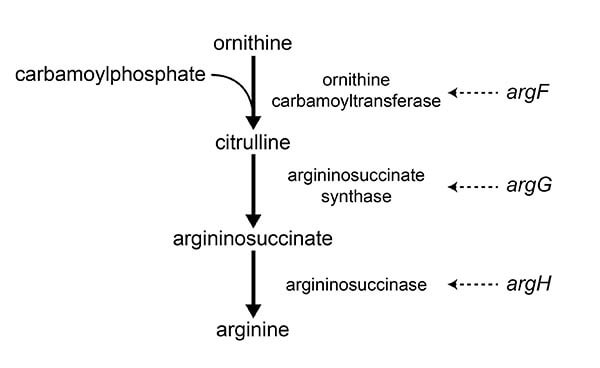 Figure 1: A synthesis pathway for the amino acid arginine. Each gene in italics in the diagram produces one enzyme necessary for the synthesis of this essential amino acid required for growth.
Figure 1: A synthesis pathway for the amino acid arginine. Each gene in italics in the diagram produces one enzyme necessary for the synthesis of this essential amino acid required for growth.  Table 1: Growth response of mutant strains in "minimal" media with supplements as indicated. Growth is indicated by (+), and no growth is indicated by (-).
Table 1: Growth response of mutant strains in "minimal" media with supplements as indicated. Growth is indicated by (+), and no growth is indicated by (-).
According to the information provided, a conclusion that can be made with certainty is that neither mutant strain P nor Q have the defective enzyme:
Correct Answer: C
Explanation You should recognize that enzymes typically end with –ase and so you can see that the figure provided indicates the 3 enzymes that are catalysts for the three reactions as shown. Now let’s reinterpret the question: if neither P nor Q have a defective enzyme X, that suggests that both P and Q have a functioning enzyme X (the other interpretation is that they have no enzyme but that is not consistent with the data in the table provided).
The information in the table shows a (+) symbol in the last two columns indicating that both P and Q are able to convert argininosuccinate to arginine (see Table 1). This necessarily means that both P and Q have a functioning enzyme argininosuccinase (see Figure 1).
Going Deeper: More about the 1 gene, 1 enzyme hypothesis and the importance within a metabolic pathway. Let’s consider some hypothetic examples using Figure 1 but no longer considering Table 1 so we can explore other possibilities and their consequences.
For example, let’s say that Mutant# 1 couldn't make ornithine. So, the gene that makes the enzyme for ornithine synthesis must have been mutated. If ornithine is added to the media, citrulline and then arginine would be made and Mutant# 1 could grow.
Similarly, consider a genetic mutation in Mutant# 2 affecting the enzyme that makes the arginine precursor citrulline. Adding citrulline as a supplement complements the mutation and drives arginine synthesis to completion. And consider a genetic mutation #3 affecting the final step of arginine synthesis — the conversion of citrulline to arginine. By adding arginine as a supplement, the mutation is complemented (like a ‘work around’) and Mutant# 3 could grow. With each mutated gene, only one step of the metabolic pathway is affected. Therefore, one gene is responsible for one enzyme or protein (of course, it’s a little more complicated because some genes are responsible for polypeptides which combine with other polypeptides to form a functioning protein).
Experiments using the two mutant strains P and Q, reveal that strain P accumulates citrulline, but strain Q does not. Which of the following statements is most consistent with the data provided?
Correct Answer: D
Explanation On the Surface: In the previous question, we established that the enzyme argininosuccinase must be functional for both strains and that means that argH is not defective (no mutation) for either P or Q. Thus any answer choice suggesting an argH mutation is incorrect.
Strain P accumulates citrulline. This means that the synthetic pathway was working up to citrulline but then was blocked from progressing. This means that the next step in the production line, the gene product from argG, is not functional (mutation). Thus we have our answer.
Going Deeper: Strain Q: no accumulation of citrulline means that there must be a blockage before that point, so given the information presented, argF must have a mutation meaning ornithine accumulates. Adding ornithine: no growth and it accumulates. Adding citrulline, no growth because there must ALSO be an argG mutation. This is consistent with adding something after the argG step/mutation, argininosuccinate, resulting in growth. Thus strain Q has must have 2 mutations in the synthesis pathway shown.

Get fully prepared for the exam with our comprehensive full-length MCAT practice tests.
They were designed to simulate the real exam experience, with helpful explanations, instant scores, and question-specific discussion boards. Many science problems in our online mock exams also include background information in video format.
Sharpen your skills, build endurance, and boost your confidence.
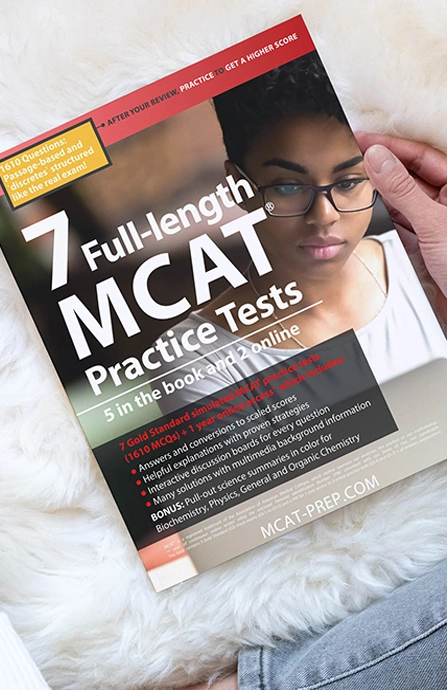
Our MCAT book is your ultimate study companion. It includes in-depth content review, strategic test-taking tips, and 7 full-length practice tests: 5 in the book, 2 online.
Incorporate the erasable noteboard into your mock exam simulations alongside our full-length MCAT practice tests.
Whether you’re a beginner or aiming for a top score, this resource will guide you toward MCAT excellence.
Apoptosis is the process of programmed cell death that can occur in multicellular organisms. The proteins involved in apoptosis are associated with pathways for cell cycle arrest and DNA repair. These processes are mostly regulated through the interplay of various proteins involved in feedback loops including some of the ones shown in Figure 1.

Figure 1: Feedback loops forming a regulatory network affecting apoptosis, cell cycle arrest and DNA repair. (Bioformatics Institute)
According to Figure 1, CDK2 activity would most reasonably increase due to all of the following EXCEPT:
Correct Answer: D
Explanation
Notice the key in the figure which will allow us to follow each arrow that stimulates the next protein and each symbol for negative feedback which means there will be some downregulation (amount/concentration goes down). [Notice a key step in the diagram: p21 inhibits CDK2]
Degradation of p21 implies that the concentration of p21 in its active form goes down. The diagram shows that p21 has a negative influence on CDK2. In other words, when p21 is high, CDK2 goes low. But in our instance, p21 is low (degraded) so this allows CDK2 to rise unchecked.
High cyclin G concentrations: From the bottom of Figure 1, we can see that high cyclin G leads to high mdm2 and low p53 (notice carefully, when we leave mdm2, there is only one place to go in the diagram because all the other symbols are pointing to mdm2 and only one symbol is pointing away). Note that we used the most direct route to get to CDK2 as the question used the words “most reasonably”. Low p53 means low p21 which we established will lead to a rise in CDK2.
A mutation in the gene that produces PTEN: The great majority of mutations will result in an ineffective gene product or none at all. Thus we have a decrease in PTEN which will lead to a rise in PIP3 (if you are unsure, think of what happens if PTEN goes up, then PIP3 must go down because of the negative feedback symbol), rise in AKT, rise in mdm2, decrease in p53 which we already established means an eventual rise in CDK2.
High p53 concentrations: clearly we get the opposite of the above, meaning a decrease in CDK2. High p53 stimulates p21 which has a negative feedback on CDK2.
The red bread mold Neurospora crassa grows well on a cultural plate with "minimal" medium which is a fluid containing only a few simple sugars, inorganic salts, and vitamin. Neurospora that grows normally in nature (wild type) has enzymes that convert these simple substances into the amino acids necessary for growth. Mutating any one of the genes that makes an enzyme can produce a Neurospora strain that cannot grow on minimal medium. The mutant would only grow if the enzyme product were to be added as a supplement. On the other hand, if a "complete" medium is provided, containing all required amino acids, then Neurospora would grow, with or without mutation.

Figure 1: A synthesis pathway for the amino acid arginine. Each gene in italics in the diagram produces one enzyme necessary for the synthesis of this essential amino acid required for growth.

Table 1: Growth response of mutant strains in "minimal" media with supplements as indicated. Growth is indicated by (+), and no growth is indicated by (-).
According to the information provided, a conclusion that can be made with certainty is that neither mutant strain P nor Q have the defective enzyme:
Correct Answer: C
Explanation
You should recognize that enzymes typically end with –ase and so you can see that the figure provided indicates the 3 enzymes that are catalysts for the three reactions as shown. Now let’s reinterpret the question: if neither P nor Q have a defective enzyme X, that suggests that both P and Q have a functioning enzyme X (the other interpretation is that they have no enzyme but that is not consistent with the data in the table provided).
The information in the table shows a (+) symbol in the last two columns indicating that both P and Q are able to convert argininosuccinate to arginine (see Table 1). This necessarily means that both P and Q have a functioning enzyme argininosuccinase (see Figure 1).
Going Deeper: More about the 1 gene, 1 enzyme hypothesis and the importance within a metabolic pathway. Let’s consider some hypothetic examples using Figure 1 but no longer considering Table 1 so we can explore other possibilities and their consequences.
For example, let’s say that Mutant# 1 couldn't make ornithine. So, the gene that makes the enzyme for ornithine synthesis must have been mutated. If ornithine is added to the media, citrulline and then arginine would be made and Mutant# 1 could grow.
Similarly, consider a genetic mutation in Mutant# 2 affecting the enzyme that makes the arginine precursor citrulline. Adding citrulline as a supplement complements the mutation and drives arginine synthesis to completion. And consider a genetic mutation #3 affecting the final step of arginine synthesis — the conversion of citrulline to arginine. By adding arginine as a supplement, the mutation is complemented (like a ‘work around’) and Mutant# 3 could grow. With each mutated gene, only one step of the metabolic pathway is affected. Therefore, one gene is responsible for one enzyme or protein (of course, it’s a little more complicated because some genes are responsible for polypeptides which combine with other polypeptides to form a functioning protein).
Experiments using the two mutant strains P and Q, reveal that strain P accumulates citrulline, but strain Q does not. Which of the following statements is most consistent with the data provided?
Correct Answer: D
Explanation
On the Surface: In the previous question, we established that the enzyme argininosuccinase must be functional for both strains and that means that argH is not defective (no mutation) for either P or Q. Thus any answer choice suggesting an argH mutation is incorrect.
Strain P accumulates citrulline. This means that the synthetic pathway was working up to citrulline but then was blocked from progressing. This means that the next step in the production line, the gene product from argG, is not functional (mutation). Thus we have our answer.
Going Deeper: Strain Q: no accumulation of citrulline means that there must be a blockage before that point, so given the information presented, argF must have a mutation meaning ornithine accumulates. Adding ornithine: no growth and it accumulates. Adding citrulline, no growth because there must ALSO be an argG mutation. This is consistent with adding something after the argG step/mutation, argininosuccinate, resulting in growth. Thus strain Q has must have 2 mutations in the synthesis pathway shown.
Would you like more MCAT practice questions with helpful explanations? Sample questions on MCAT practice tests can be acquired for free or for as little as $10 each.
The human kidney can be damaged from a number of causes resulting in a patient's inability to filter toxins (i.e. urea) from the body which could result in death. Complete kidney failure is usually first treated with dialysis which "cleans" the blood.

Figure 1: Dialysis. The "dialyzer" is a glass container that has 3 main components: (1) blood percolating through to be cleaned; (2) a dividing membrane; and (3) the dialysate. The latter is liquid containing chemicals used to draw fluids and toxins out of the bloodstream and supply electrolytes and other chemicals to the bloodstream. (kidney.niddk.nih.gov)
Considering the information provided, which of the following is NOT consistent with the process of dialysis?
Correct Answer: D
Explanation
On the Surface: Dialysis only refers to the transfer of the solute (diffusion), while the transfer of the solvent is called osmosis.
Going Deeper: Diffusion is the movement of a substance down its concentration gradient (from a region of high concentration to one of lower concentration). This is the process that must be occurring in the dialyser to remove toxins from the blood (because the dialysate, logically, would have no toxins so the toxins defuse out of the blood into the dialysate). Note that vital substances in the blood should be kept in the blood: options would include having a dialysate with the same concentration of those substances (so they don’t diffuse out of the blood) or by adjusting the permeability of the membrane.
Osmosis is the movement of a solvent across a semi-permeable membrane from a region of low solute concentration to a region of high solute concentration. In Biology and Biochemistry, that solvent is, of course, water. In this context, the easier way to imagine osmosis is that it is simply the diffusion of water across a semi-permeable membrane from a region of high water concentration (i.e. low solute concentration) to a region of low water concentration (i.e. high solute concentration).
So in summary, osmosis deals with how much water passes through the membrane, while dialysis deals with what type of solute (i.e., sodium, protein, glucose) passes through by simple diffusion.
N.B. Notice the link between diffusion and osmosis and the Second Law of Thermodynamics (Physics). All spontaneous change leads to an increase in the entropy (randomness) of the universe. Of course, biological systems exist because processes which increase entropy can be coupled with processes which increase order, as long as the overall (net) entropy of the universe increases.
Sharpen your skills, build endurance, and boost your confidence.

In order to become active, a Map kinase has to undergo phosphorylation of its catalytic domain on amino acids 183 and 185 according to the primary structure. To create a catalytically inactive Map kinase - a kinase dead mutant - the most likely substitution within its active domain would be:
Correct Answer: C
Explanation
Protein phosphorylation is an important regulation of protein activity and function. Upon phosphorylation, a phosphate moiety is covalently attached to a hydroxyl (-OH) group of any of the three amino acids: Tyrosine (Y), Threonine (T) or Serine (S), which are the only 3 amino acids with a side chain containing hydroxyl. Keep in mind that all amino acids between the first and last in a polypeptide or protein, have both their carboxyl and amino ends involved in peptide bonding, so we must assess the side chain.
When a phosphate group is added, a conformational change often occurs within the protein domain. Such conformational change would allow the protein binding its partners and also phosphorylating them to promote a further propagation of protein activation along a signaling pathway. In the mutants suggested in answer choices A, B and D, a partial phosphorylation could still be taking place within the catalytic domain, which could have rendered a partially active Map kinase. However, in the mutant G183A185 (i.e. glycine - G - at position 183 in the primary structure and alanine - A - at position 185) suggested in answer choice C, no phosphorylation is possible within its catalytic domain due to the absence of the hydroxyl functional group, therefore this mutant would be ‘kinase dead’.
Going Deeper: Glycine and alanine are the most commonly used amino acids for substitutions when mutating protein active sites since these amino acids are neutral and relatively small as compared to others.
Background: The new MCAT requires knowledge of the side chains of amino acids, their features, as well as the 3-letter and 1-letter representations. The following image represents the 20 standard amino acids at physiological pH with the 9 essential amino acids identified with a red asterisk.
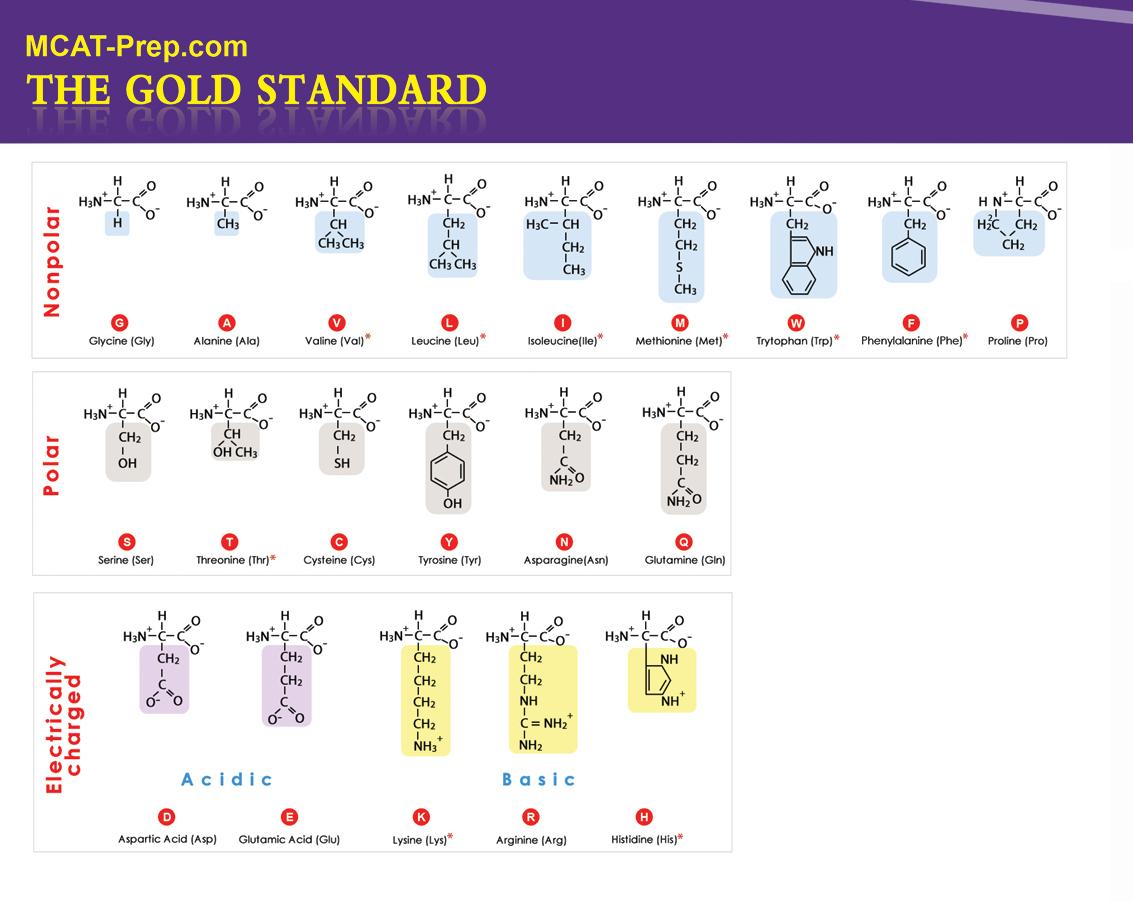
| Ala | A | Alanine |
| Arg | R | Arginine |
| Asn | N | Asparagine |
| Asp | D | Aspartic acid |
| Cys | C | Cysteine |
| Gln | Q | Glutamine |
| Glu | E | Glutamic acid |
| Gly | G | Glycine |
| His | H | Histidine |
| Ile | I | Isoleucine |
| Leu | L | Leucine |
| Lys | K | Lysine |
| Met | M | Methionine |
| Phe | F | Phenylalanine |
| Pro | P | Proline |
| Ser | S | Serine |
| Thr | T | Threonine |
| Trp | W | Tryptophan |
| Tyr | Y | Tyrosine |
| Val | V | Valine |
Enhance your proficiency in MCAT Biochemistry by delving deeper into the subject and completing additional Biochemistry problems, all accessible on our website. Click here: MCAT Practice Tests | MCAT Prep Courses
Drinking a cup of coffee is something people do every day, alone or with friends, at home or at work. A researcher following the theory of symbolic interactionism who is observing two people enjoying a coffee together would primarily point out that:
Correct Answer: A
Explanation
Foundational Concept: 9
Cultural and social differences influence well-being
Content Category: 9A
Understanding social structure
Scientific Reasoning and Inquiry Skill: 1
Knowledge of Scientific Concepts and Principles
A is correct. Symbolic interactionists observe how people relate to things based on the meanings those things have for them. These meanings are created through social interaction and can be interpreted differently. For instance, people can meet to ‘have a coffee’ but are not obliged to actually consume the drink. They can have a tea and still enjoy the shared meaning of comfort and spending time with their friends which is related to the idea of ‘having a coffee’.
Distractors
B is incorrect. The claim that coffee is a stimulant drug is true but a social interactionist perspective would not look at the fact itself but ask what the underlying shared meanings are. This theory would look at what makes it acceptable to consume a particular type of stimulant drugs in certain settings and under certain circumstances.
C is incorrect. This is not of primary concern for social interactionism theory. A Marxist perspective would ask about the nature of coffee as commodity and how the global supply chain affects workers and economies worldwide.
D is incorrect. This is not of primary concern for social interactionism theory. This would be of interest to theories about consumption and lifestyle.
Your ultimate practice exam duo.
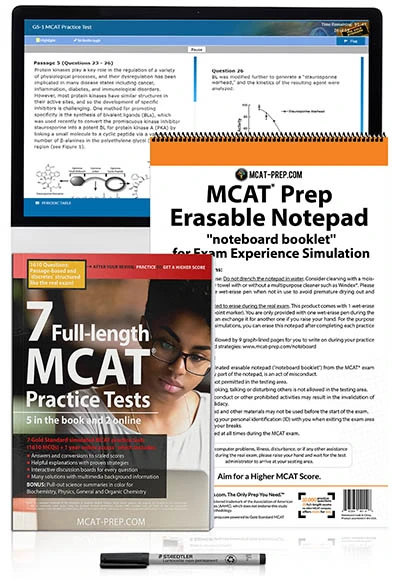
If the goal of the health communication is to have influence on individuals, families, neighborhoods, medical and social service organizations, and ultimately public health policy, they are adhering to:
Correct Answer: A
Foundational Concept: 7
Biological, psychological, and sociocultural factors influence behavior and behavior change.
Content Category: 7A
Individual influences on behavior
Scientific Reasoning and Inquiry Skill: 1
Knowledge of Scientific Concepts and Principles
A is correct. Ecological theory maintains that human behavior (in this case, health) is influenced by multiple levels including the individual (e.g., the patient’s beliefs, personality, past experiences, etc.), the family, community, neighborhood, workplace, school, etc. and institutions, for example other organizations such as medical, social service, legal institutions, etc. and finally, culture, tradition, and existing governmental laws. Human behavior does not operate within a vacuum.
Distractors
B. This is incorrect. Family systems theory argues that behaviors must be understood within the family system context. It is important to understand the family functions, roles, boundaries, and communication patterns. Therefore, health behavior must take into account the family.
C. This is incorrect. Attachment theory emphasizes that behavior stems from the emotional attachments between infant and parents/caregivers.
D. This is incorrect. Assimilation theory is used in sociology to understand how immigrants adopt the cultural norms of the new host country.
Hone your skills with dedicated practice! Our comprehensive 7-exam book features 5 in-book tests and 2 online exams. With this book, you'll gain one-year online access to solutions, in-depth explanations, scaled score conversions, and engaging discussion boards. Explore here: Gold Standard MCAT Practice Questions Book.
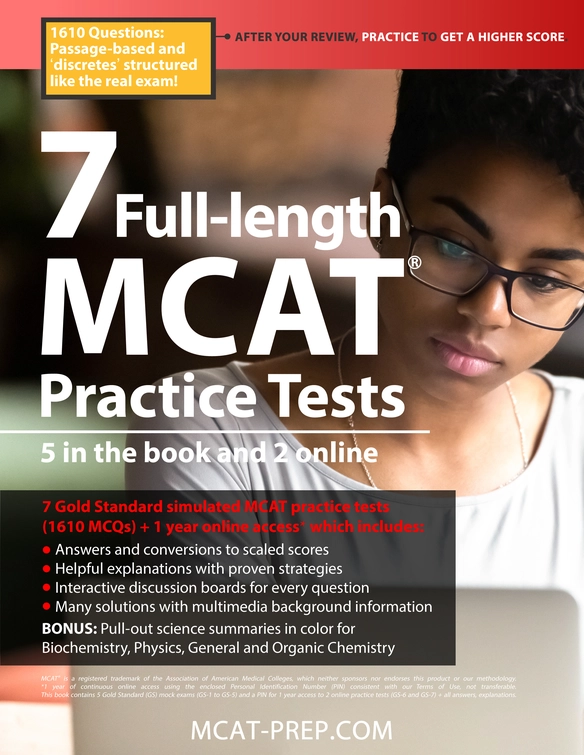
Electron Beam Therapy (EBT) is a form of radiotherapy where electrons are directed to a tumor site. Consider an electron moving at constant velocity which enters the area between two charged plates, as shown in the diagram below. Which of the paths correctly indicates the electron's trajectory after leaving the area between the charged plates?
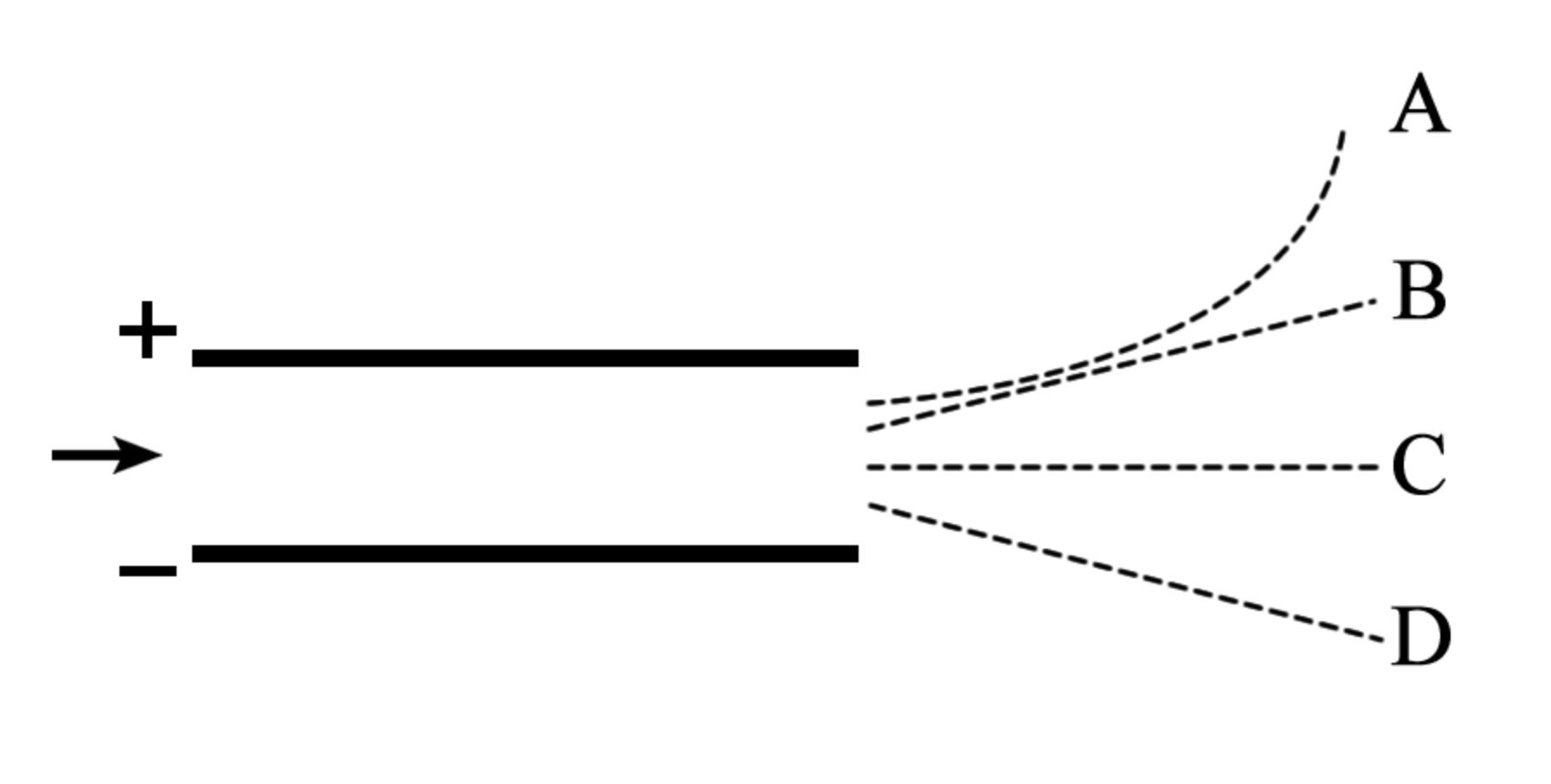
Correct Answer: B
Explanation
While in the area between the plates, the negatively charged electron is attracted to the positive plate and so it would bend “upwards”. But after leaving the plates, there is no more net force acting on the electron. Therefore, the electron would continue in motion in a straight line according to Newton's first law (inertia).
Clinical Correlate: Electron beams have a finite range, after which the dose falls off rapidly. Therefore they spare deeper, healthy tissue. Thus it can be used for cancers of the skin, or intraoperative radiation treatment. Generally speaking, radiation therapy may apply photons, electrons, protons or heavier particles in an attempt to destroy a tumor.
Your ultimate practice exam duo.

In chemistry, resonance is a way of representing delocalized electrons within certain molecules where the bonding cannot be expressed by one single Lewis formula. A molecule with delocalized electrons can be represented by several contributing structures. Each of the following structures is a resonance form of the molecule shown below EXCEPT one. Which one is the EXCEPTION?
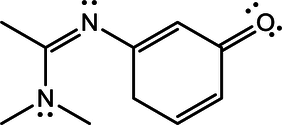
Correct Answer: C
First, let's number the carbons in the ring. Oxygen is attached to C1 and so N is attached to C3. So in the original molecule, we see that there are double bonds in the ring between C2=C3 and C5=C6. All of the answer choices follow the rules of drawing resonance structures except answer choice C. Let’s carefully follow the electrons for answer choice C and thus we can understand what went wrong.
Our starting material:
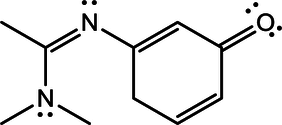
Keep in mind that oxygen is the most electronegative atom in the molecule and thus 'wishes' to withdraw electrons to itself.
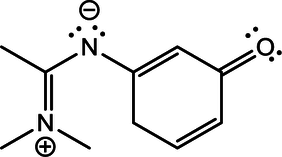
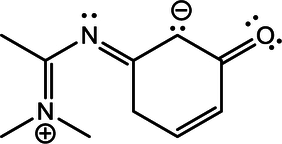
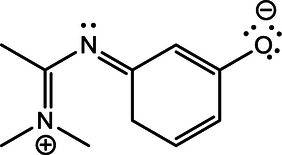
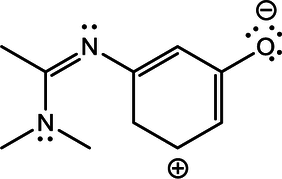
Enhance your proficiency in MCAT Organic Chemistry by delving deeper into the subject and completing mock exams, all accessible on our website. Click here: MCAT Practice Tests | MCAT Prep Courses.
Which of the following energy sublevels can contain the most electrons?
Correct Answer: D
The first quantum number, n, indicates the size of the orbital but is irrelevant for this question because you must look at the second quantum number to determine the maximum number of electrons. The second quantum number, l, indicates the shape of the orbital. The third quantum number, m, which is also irrelevant for this question, indicates the spatial orientation of the orbital. At most, only two electrons can occupy a single orbital.
| l | Subshell | # of Orbitals | Max # of Electrons |
| 0 | s | 1 | 2 |
| 1 | p | 3 | 6 |
| 2 | d | 5 | 10 |
| 3 | f | 7 | 14 |
Thus, the maximum number of electrons for each answer choice is as follows:
A) n = 4, l = 0. . .2 electrons
B) n = 5, l = 2. . .10 electrons
C) n = 6, l = 2, ml = +1. . .10 electrons
D) n = 4, l = 3. . .14 electrons
Therefore, the correct answer is D.
Quantum numbers on the new MCAT? Yes, we were also surprised! But not only is this topic on the AAMC's official topic list for Chem-Phys but it is also directly tested in the AAMC's first online sample test for the new MCAT. We wanted to be sure that you were exposed to a question that covers different aspects of different quantum numbers (better to be safe than sorry!).
Enhance your proficiency in MCAT General Chemistry by delving deeper into the subject and completing additional General Chemistry problems, all accessible on our website. Click here: Free MCAT Practice Test | MCAT Prep Courses
The pen is the tongue of the mind.
-Miguel de Cervantes in Don Quixote
Roland Barthes' untimely death at age 64 marked the loss of an intellectual, philosophical and literary icon whose writings continue to have a significant international influence on the fields of philosophy, literary criticism, architecture, design, photography and fashion. A complex, enigmatic and intensely private figure, Barthes reveled in the idea of language and, above all else, was a writer who loved to write: his extensive oeuvre ranging from journalistic pieces on such diverse subjects as toys, wrestling, fashion, the French novel, wine, film, cinema and French culture - to complex critiques of the meaning of 'signs', the nature of 'authorship' and the interpretation of text. Barthes' passion and sense of aesthetic style no doubt also extended to the objects that he most loved to write with: his collection of fountain pens that used in writing the first drafts of many of his most famous works.
In one of his curious and rather more flamboyant interviews published in Le Monde in 1973, entitled - An Almost Obsessive Relation to Writing Instruments - as translated by Linda Coverdale and published posthumously by University of California Press in The Grain of The Voice, Roland Barthes speaks of his love of writing with fountain pens and the pleasure they bring to his writing that is so implicit in his work.
Smitten with the feel and pleasure of writing with a fountain pen, Barthes reflects in the interview conducted by Jean-Louis de Rambures, "In the end, I always return to fine fountain pens. The essential thing is that they can produce that soft, smooth writing I absolutely require." Indeed, Barthes goes on to confess that he felt "no affinity" with the ubiquitous ballpoint pen, unflatteringly associating it with the notion of a "Bic style" or a style of writing implying that the writer had 'dashed off the copy rather than taken the time to approach the work in a more studied way that he believed the writers' use of a fountain pen would imply. As Barthes remarks to de Rambures, ". I would say, a bit nastily, that there is a "Bic style" which is really just for churning out copy, writing that merely transcribes thought."
Writing with fountain pens also appears to have given Barthes a sense of connectedness with the page that other forms of writing instruments simply weren't able to achieve. Like many exemplary writers, Barthes was drawn to the notion that writing by hand with a fountain pen brings with it many unique qualities of style and control that can't be replicated through more impersonal, less intimate technological means. His penchant for collecting pens also became an obsessional quest, regaling himself and confessing to his interviewer the fact that he had ". far too many pens. " and that ". as soon as I see a new one, I start craving it. "
For Barthes, writing with fountain pens also accords with his philosophy of writing as a tactile art form. As a sensualist, the tactile nature of the fountain pen also suited Barthes' whole idea of what he felt writing was about: an act of creating text through the physical act of writing by hand and its intimate connection with the page.
While Roland Barthes wrote of the 'bodily connection' of writing by hand, the pleasures of creating text with fountain pens is one that continues to be prevalent amongst a number of contemporary writers. Daniel Chandler of the University of Wales in his study of 'the phenomenology of writing by hand' refers to a number of contemporary writers who place great importance on writing by hand and the physical connection with the page. Chandler cites prolific American novelist John Barth as one who particularly favours the use of the fountain pen and "the muscular movement of putting down script on paper. " (Barth in an interview with Blair Mahoney for literary website The Modern Word speaks of ". draw[ing] out my sentences in longhand with an immortal British Parker 51. "). Chandler also cites William Gass, Fay Weldon and Tom Robbins - amongst many other writers - as examples of contemporary writers who are deeply attached to the act of writing by hand.
Niski, M. D. (2006, December). Barthes and the Fountain Pen: An Intimate Obsession.
Question 1The passage suggests the use of a fountain pen and its association with which of the following senses?
Question 2Within the context of the fifth paragraph, the term "ubiquitous" can be reasonably inferred to mean:
Question 3What can one infer the French term "oeuvre" in Paragraph 2 to mean within the context of discussion?
Question 4From passage information, what can one infer "British Parker 51" to be?
Question 5How would one characterize the author's purpose in this passage?
The passage suggests the use of a fountain pen and its association with which of the following senses?
Correct Answer: Touch
Explanation
This is an inferential question based on passage information. All answers may be partially true; however,Paragraph 7 indicates "tactile" referring to the sense of touch:
For Barthes, writing with fountain pens also accords with his philosophy of writing as a tactile art form. As a sensualist, the tactile nature of the fountain pen also suited Barthes' whole idea of what he felt writing was about: an act of creating text through the physical act of writing by hand and its intimate connection with the page.
Within the context of the fifth paragraph, the term “ubiquitous” can be reasonably inferred to mean:
Correct Answer: abundant.
Explanation
This contextual and complex sounding question can be answered using the the process of elimination (PoE). The term is mentioned in the phrase "Barthes goes on to confess that he felt 'no affinity' with the ubiquitous ballpoint pen." One can easily rule out (B) parsimonious (terse or simple of grammar and style) and (C) profound. (A) Collective can be ruled out because it usually refers to a totality or effect, leaving the sheer quantitative or quantity of (D) abundant as the correct answer.
What can one infer the French term “oeuvre” in Paragraph 2 to mean within the context of discussion?
Correct Answer: Works of writing
Explanation
This contextual question seeks the best answer given the answer options. Repeating the phrase or sentence:
. . . his extensive oeuvre ranging from journalistic pieces on such diverse subjects as toys, wrestling, fashion, the French novel, wine, film, cinema and French culture - to complex critiques of the meaning of 'signs', the nature of 'authorship' and the interpretation of text.
Now, substitute each answer:
(A) This seems fine but lacks specificity in relation to the general idea of writing.
B fits like a glove and translates from the French: "complete works."
C sounds like a probable answer but lacks the explanatory power of B.
D is ambiguous and general, therefore, incorrect.
From passage information, what can one infer "British Parker 51" to be?
Correct Answer: Pen
Explanation
This is a detail-oriented question of which the answer is indicated in the last paragraph, next to the last sentence:
Barth in an interview with Blair Mahoney for literary website The Modern Word speaks of ". draw[ing] out my sentences in longhand with an immortal British Parker 51. "
How would one characterize the author's purpose in this passage?
Correct Answer: To Praise or Blame
Explanation
This is a complex-sounding question, which relates to the author’s purpose in writing the passage. Certainly, it is complex because all of the answers are imbricated to at least some extent within the others. Therefore this type of question constitutes a best option question and answer format. The first sentence of the passage gives us clues. There is also a similar pair of options, which must be noticed.
(A) There is certainly information within the passage, yet given the author’s style and relationship to an academic audience – this cannot be ascertained to be the “purpose.”
(B) As a similar option to A, this can be ruled out. The passage is educational but given the author’s style, this cannot be inferred to be the purpose since the audience is so specific – most likely academic.
C is incorrect. If the purpose of the passage is to persuade, there would be a clearer thesis statement. This is not found in the introductory paragraph.
D is the best option. The passage is a celebration (in praise) of Barthes. This is relatively clear given the first two paragraphs. The tonality of the passage and focus on a person (praise or blame) corresponds more to eidetic form of discourse - entertainment as the purpose.
Struggling with MCAT CARS (Critical Analysis and Reasoning Skills)? Our CARS Booster offers essential strategies and 5 unique CARS tests, distinct from our full-length exams. You can access it as part of both the Gold Standard MCAT Crash Course and the Home Study Package. Click here: MCAT Prep Courses.